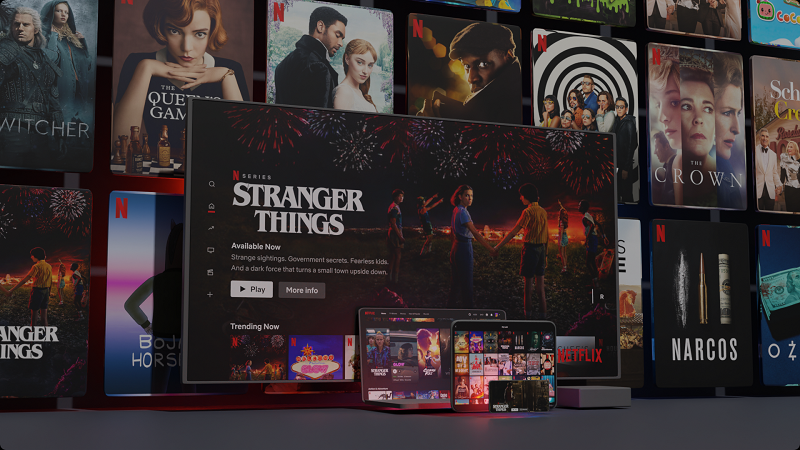Netlfix saw its subscription numbers rise by four million paying users in the first quarter compared to a record 15.8 million a year ago.
Shares in the video streaming service dropped 11% after subscriptions grew by a weaker than expected four million at the start of this year following a record 2020.
The first quarter figure compares to 15.8 million net additions in the same period a year ago as the streaming service was boosted by consumers staying at home during the pandemic.
Netflix blamed the “big COVID-19 pull forward” it experienced in 2020 as well as production delays caused by the outbreak – resulting in a weaker content offering – for its falling short.
It is now projecting net additions of just one million for the second quarter, a far cry from the highs of last year when subscriber numbers rose by 10.1 million in the April-June period and by a record 37 million for the year as a whole.
The latest quarterly growth took Netflix’s total subscriber base to 208 million.
Netflix said: “We continue to anticipate a strong second half with the return of new seasons of some of our biggest hits and an exciting film line-up.
“In the short term, there is some uncertainty from COVID-19; in the long term, the rise of streaming to replace linear TV around the world is the clear trend in entertainment.”
Netflix is facing increased competition from new streaming services that have been set up by traditional broadcasting companies such as Disney+, which passed 100 million subscribers in March.
The company reported revenues of $7.16bn for the first quarter, up 24% on the same period a year ago, while profits more than doubled from $709m to $1.71bn.
Mark Stephenson, Joint Head of Investment at MediaCom, said fierce competition makes it harder to grow subscriber numbers. He believes Netflix will need to finds ways to compete with these studios without resorting to price increases, which would drive viewers to other providers.
“In just the six years that Netflix has been in the UK, it has moved from a disruptor in the AV market to a household staple,” Stephenson said. “Yet, despite the lockdown opportunity for its subscriber base to expand, the company has missed its latest growth forecast; the expansion of other major studios’ own content services – such as Comcast’s Peacock and Warner’s HBO Max in the US and Disney+ globally – has provided Netflix with serious competition. As we look towards a future where we spend less time at home, it’s crucial that Netflix finds ways to compete with these studios without resorting to price increases which would drive viewers to other providers.
“For instance, Netflix’s production push in the UK shows a commitment to more regionally based programming. While this may increase costs – especially to match the expected quality in production for the brand – by creating and diversifying their own productions and having clear regional strategies, Netflix is still ahead of their competitors in delivering a mature product. This momentum must continue, and ultimately, be Netflix’s bread and butter. I expect to see continuous long-term growth in Netflix’s subscribers, but delivering a product strong enough to see off competitors will cost a large sum and a clear strategy. In a more competitive environment, and without the uniquely fertile environment of a lockdown, growth will be hard-won.”

